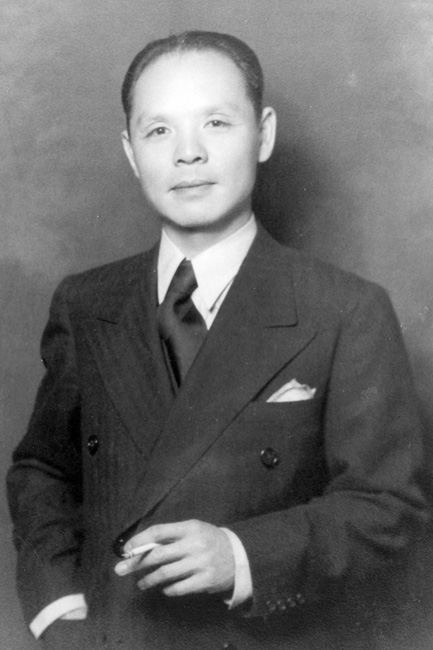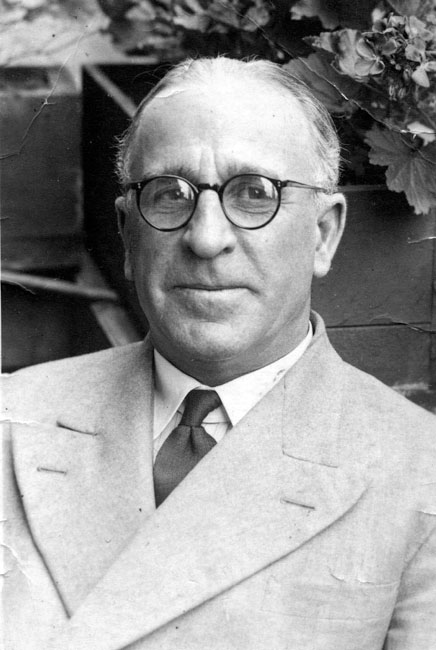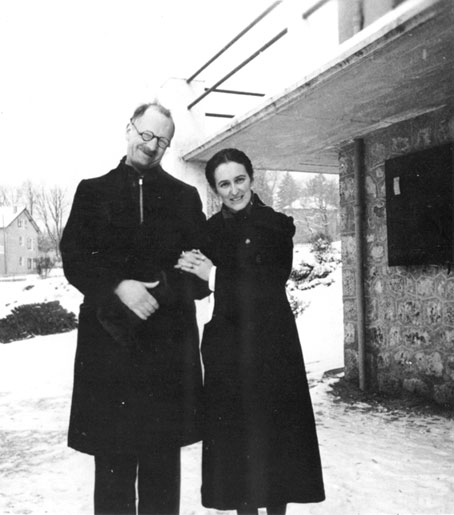- Samuel P. Oliner and Pearl M. Oliner, The Altruistic Personality – Rescuers of Jews in Nazi Europe, The Free Press, New York 1988, p. 249.
- Vancouver Holocaust Education Centre and the Center for Holocaust and Genocide Studies, University of Minnesota.
- Vancouver Holocaust Education Centre and the Center for Holocaust and Genocide Studies, University of Minnesota.
- Michael Smith, Foley, The Spy Who Saved 10,000 Jews, Hodder and Stoughton, London 1999, P. 138.
- https://www.yadvashem.org/righteous/stories/trocme.html
Introduction
This article will examine how the courageous actions of the Righteous Among the Nations can be highlighted when teaching and commemorating the Holocaust.
By introducing examples of some of the Righteous Among the Nations, the teacher can introduce historical content, and religious and moral values, while personalizing events of the Holocaust. This important historical lesson can be taught through various disciplines such as history, religion, civics, and literature.
In Holocaust-related research and literature, the word "Righteous" is the term used for those who saved Jewish lives during the period of the Holocaust, while risking their own lives and those of their families (rescuers). The Yad Vashem Law, enacted in 1953, entrusted Yad Vashem with documenting the history of the Jewish people during the Holocaust period, preserving the memory and story of each of the six million victims, imparting the legacy of the Holocaust for generations to come through its archives, library, school, museums, and recognition of the Righteous Among the Nations. Since 1963, a commission headed by an Israeli Supreme Court Justice has been charged with the duty of awarding the title "Righteous Among the Nations."
The historical account of the Holocaust would not be complete without the amazing stories of the Righteous Among the Nations. Righteous can serve as role models for future generations and as examples of acts of great humanity carried out in the most dire and difficult circumstances. The Righteous came from very different social backgrounds – most were ordinary people, and all acted without ulterior motives such as monetary gain or recognition. They could have turned away, but they chose to act on behalf of their fellow man. What dilemmas did they face?
"Rescuers, like non-rescuers, worried both before and during the war about feeding, sheltering, and protecting themselves and their families. What distinguished rescuers was not their lack of concern with self, external approval, or achievement, but rather their capacity for extensive relationships – their stronger sense of attachment to others and their feeling of responsibility for the welfare of others, including those outside their immediate familial or communal circles. While some tried to resist the burdens imposed by such attachments, their sense of personal obligation did not allow them to do so. The help they extended to Jews was rarely the result of a perception of Jews as particularly worthy, but was the result of a reflection of their characteristic ways of determining moral values and actions. For some rescuers, helping Jews was a matter of heightened empathy for people in pain. For others, it was due to internalized norms of social groups to whom they were strongly attached. And for a small minority, it was a question of loyalty to overriding autonomous principles rooted in justice or caring."1
Below we have outlined some examples from very diverse backgrounds and countries of those honored by Yad Vashem as Righteous Among the Nations, so students can understand what prompted and motivated them to help. Teachers may opt to use examples in the classroom as a way to demonstrate how some individuals, the tiny minority, chose to risk their lives on behalf of Jews during the Holocaust.
- 1. 1
Dr. Feng-Shan Ho, Consul-General of China in Vienna, 1938-40
Feng-Shan Ho had probably never met or seen a Jew before he arrived in Vienna to serve as the Chinese Consul-General from 1938-1940. After Austria’s annexation to Nazi Germany in March, 1938, the 185,000 Jews there were subjected to a severe reign of terror, which resulted in intense pressure to leave the country. In order to do so, the Nazis required that Jews have entry visas or boat tickets to another country.
Unlike his fellow diplomats, Ho issued visas to Shanghai to all requesting them, even to those wishing to travel elsewhere but needing a visa to leave.
Why was Feng-Shan Ho willing to help the Jews of Austria when most others would not?
"I thought it only natural to feel compassion and to want to help. From the standpoint of humanity, that is the way it should be." 2
Feng-Shan Ho defied direct orders and issued innumerable visas to Jews escaping the Nazi occupation of Austria after the Anschluss (the annexation of Austria by Germany in 1938). This enabled Jewish refugees to escape from Austria to the United States, Canada, South America, Palestine, the Philippines and Shanghai, China. Many Jews were released from concentration camps due to these Chinese visas. Feng-Shan Ho was awarded the title of Righteous Among the Nations for his humanitarian courage in issuing Chinese visas to Jews in Vienna.
He was described as a man with a "compassionate heart." That compassion was most likely the result of his background. Born on September 10, 1901, in rural Yiyang in Hunan Province, China, his name Feng-Shan means "Phoenix on the Mountain." Poor and fatherless by age seven, he and his family were helped by the Norwegian Lutheran Mission. Feng-Shan Ho was educated in their schools and felt a lifelong gratitude.
"He knew he had received many gifts from God. He felt that they were not given to him solely for his own benefit, but to do for others, for his fellow man," said his Pastor, Reverend Charles Kuo. Feng-Shan Ho expressed this in his own words in a poem written to his wife Shauyun on New Year's Day, 1947.
Untitled / Feng-Shan Ho
The gifts Heaven bestows are not by chance
The convictions of heroes not lightly formed.
Today I summon all spirit and strength,
Urging my steed forward ten thousand miles.3
On 7 August, 2000, Feng-Shan Ho was recognized by Yad Vashem as a Righteous among the Nations.
Katarzyna Kmita, Poland, 1942-1944
Beno Sznajder was born in 1912 in Lwow. His parents employed Katarzyna Kmita for many years as his nanny. In 1942, after escaping from the local ghetto, Beno Sznajder and his wife Emilia, made their way late at night to Kmita’s apartment. Although she shared a one-room apartment with two other women, Kmita welcomed the Sznajders and offered to hide them there. Soon the apartment became less crowded, when Kmita’s friends, afraid of discovery, left. In risking her life on behalf of her charges, Kmita was guided by loyalty and humanitarian principles, which overrode considerations of personal safety and economic hardship. The Sznajders stayed in their hiding place until July, 1944, when the area was liberated by the Russians. After the war, they refused to part from Kmita, and she accompanied them when they immigrated to Israel. Kmita lived with the Sznajders in Jerusalem until her death.
On April 4, 1967, Katarzyna Kmita was recognized by Yad Vashem as a Righteous Among the Nations.
Francis Foley, British Vice-Consul in Charge of Visas in Berlin, 1938-39
Francis Foley was a passport officer in the British Embassy in Berlin from 1923 until 1939. He also worked undercover as an MI6 (British secret intelligence service) agent. Jewish officials, who worked with him at the time, estimate that he issued thousands of visas to Jewish refugees between 1938 and 1939, at a time when the British government was anxious to limit immigration, particularly to Palestine. He came from a working-class background and considered himself a Christian.
As a British spy, he was liable to arrest at any time, yet he hid Jews in his home, helped them to get forged passports, ignoring the rules of his superiors.
"What were the motives that stirred him to act like this? We who worked closely with him in those days, and often asked ourselves this question. Before all else, Foley was humane. In those dark days to encounter a human being was no common occurrence. He told us he was acting as a Christian and he wanted to show us how little the Christians who were then in power in Germany had to do with real Christianity." 4
On February 25, 1999, Frank Foley was recognized by Yad Vashem as a Righteous Among the Nations.
- 4. 4
The Village of Le Chambon-sur-Lignon, France, 1942
Pastor Andre Trocme was the spiritual leader of the Protestant congregation in the village of Le Chambon-sur-Lignon in southeastern France. In 1942, he urged his congregation to shelter any Jew who requested help. The village and its outlying areas were quickly filled with hundreds of Jews. Some of them found permanent shelter in the hilly region of Le Chambon, until the liberation of France, and others were given temporary shelter until they were able to escape across the border, mostly to Switzerland.
According to one estimate, some 5,000 Jews passed through Le Chambon and the surrounding villages in the three years during which the village served as a shelter for Jews in southern France. The Vichy authorities demanded that Trocme cease his activities. His response was clear-cut:
"These people came here for help and for shelter. I am their shepherd. A shepherd does not forsake his flock... I do not know what a Jew is. I know only human beings." 5
On January 5, 1971, Pastor Trocme was recognized by Yad Vashem as Righteous Among the Nations. Magda Trocme was recognized as a Righteous Among the Nations on May 14, 1984.
- 5. 5









